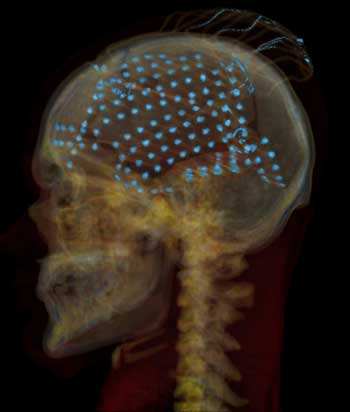A new era of bioelectronics has emerged, with scientists successfully injecting gel polymers inside leeches and zebrafish, which then organized themselves into functional electrodes.
The study, published in the journal Science, found that when the molecules in the gel come in contact with enzymes inside an animal’s body, they become electrically conductive. This method could one day lead to better treatments for people with neurological conditions like Parkinson’s and epilepsy by letting scientists stimulate areas of the body with an external voltage.
“For several decades, we have tried to create electronics that mimic biology. Now we let biology create the electronics for us,” professor Magnus Berggren at the Laboratory for Organic Electronics, LOE, at Linköping University, Sweden, said in a press release.
“Contact with the body’s substances changes the structure of the gel and makes it electrically conductive, which it isn’t before injection. Depending on the tissue, we can also adjust the composition of the gel to get the electrical process going,” Xenofon Strakosas, a researcher at LOE and Lund University and one of the study’s main authors, added.
The researchers successfully grew gel-based electrodes inside the bodies of live zebrafish and leeches. As the researchers had predicted, the electrodes were created in each organ the gel was injected into.
In the study, researchers established electrode formation in the brain, heart, and tail fins of zebrafish and around the nervous tissue of medicinal leeches, Inverse reported.
Encouragingly, the procedure did not seem to cause pain or discomfort in the zebrafish. The same was assumed for the leeches, though it’s harder to know about pain in the animals.
Zebrafish exhibit pain “in a lot of different ways, such as firing off swimming very fast, or they can roll around,” Hjort explained. “We didn’t see any of these negative effects. So, I think that’s a very good sign.”
“By making smart…
Read the full article here

Leave a Reply